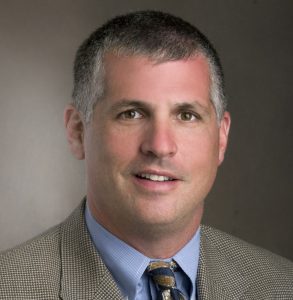By: Felipe Rivas

2 min read March 2020 — Shifting from the traditional fee-for-service environment prevalent in the U.S. healthcare system to value-based care programs requires innovative processes and outside-the-box thinking, all to the benefit of the patient. Bruce Cohen, CEO of OrthoCarolina, shares how the company is spearheading this transition.
What are the drivers of OrthoCarolina’s success and what does that entail for 2020?
OrthoCarolina is a large, independent musculoskeletal group. Our geography stretches outside of Charlotte, all the way up into the Piedmont Triad and Winston-Salem, including Hickory, Shelby and Laurinburg, with our hub in Charlotte. What makes us different is that we are on the cutting edge, embracing value-based care, seeking to lower care costs for our patients, getting them to the right facilities and providers. Our No. 1 goal is to increase access. Historically, healthcare has lacked transparency, leading to poor access and communication and resulting in high costs. We had close to a million patient visits in 2019. OrthoCarolina has 40 locations, including offices, physical and occupational therapy. We are also involved in outpatient surgery centers, which are critical for orthopedic care.
How is OrthoCarolina bolstering accessibility from a business standpoint?
The transition from the traditional fee-for-service environment into an innovative, outside-the-box, value-based care program is complex. Physicians are resistant to change so empowering and engaging them, promoting the fact that this transition comes out of a true necessity and obligation is a lengthy process. We are on the forefront at the national level in that regard. The first step is to educate people that this new option translates into better care and better access, providing different choices for our patients. We have to look at our patients as consumers, inject transparency over treatment costs and inform them what their options are. Wait times at doctors’ offices or hospitals that go for hours on end, for instance, are no longer acceptable. The challenge is to provide quality care and service without the patients feeling like a commodity or that they are on an assembly line. We developed a set of benchmarks relating to patient satisfaction, which we published online and internally so our doctors know where they stand.
How can your success move to the larger healthcare systems?
North Carolina is a Certificate of Need (CON) state, which has attracted powerful healthcare organizations that we work with closely. It is difficult from a regulatory standpoint because they often have much more control over the healthcare dollar than the rest of us do. That is all changing, however, with much more ongoing collaboration than there used to be. The systems are open to it and Charlotte is a great example. Healthcare systems are starting to embrace and acknowledge the fact they have to look at costs and stress quality and state-of-the art facilities and offer all services. Charlotte is one of the higher-cost healthcare markets in the country. It is not a sustainable model.
What health trends have you identified in Charlotte?
Our community has a primarily young component to it parallel to an aging population. On the one hand, it is healthy but more active, which creates the need for orthopedic services given the training-related injuries and other issues related to an active population. On the other hand, we are witnessing big retirement communities coming to town. Those needs, especially on the musculoskeletal side, are growing. The technology and advances in orthopedic care have enabled people to do well and be more active.
How is OrthoCarolina tackling the talent issue?
It is a competitive field. As we expand and look to provide more access, we are facing two large healthcare systems in town that make their presence felt when they open a new facility and launch a hiring campaign. Charlotte’s workforce is also highly competitive. Unemployment rates are low, it is a nice place to live, people want to be here. On the provider side, 2018 was the first time in orthopedics that more professionals finishing their training went into hospital employment positions rather than joining an independent practice.
What is on the near-term horizon for OrthoCarolina?
We are leading the charge particularly on joint and spine replacements. We launched our coordinated care program to tackle episodic care, which up until 2019 had amounted to 150 patients a year, and we are looking at potentially 1,000 cases for 2020 to become a part of this program. It includes a care navigator that checks on our patients throughout the whole episode, preoperatively and postoperatively. Our outcomes have shown close to zero complications or readmissions for program participants.
The next step is population health. This revolves around developing a program to manage the entire health of the population in coordination with different stakeholders: physicians, hospitals, insurance companies. For us, it means focusing on the musculoskeletal aspect of the program. That is when algorithms and protocols come into play to avoid redundancies, unnecessary tests and undergoing procedures at the right time and for the right patient. Our priority is to serve our community.
To learn more about our interviewee, visit: https://www.orthocarolina.com/
